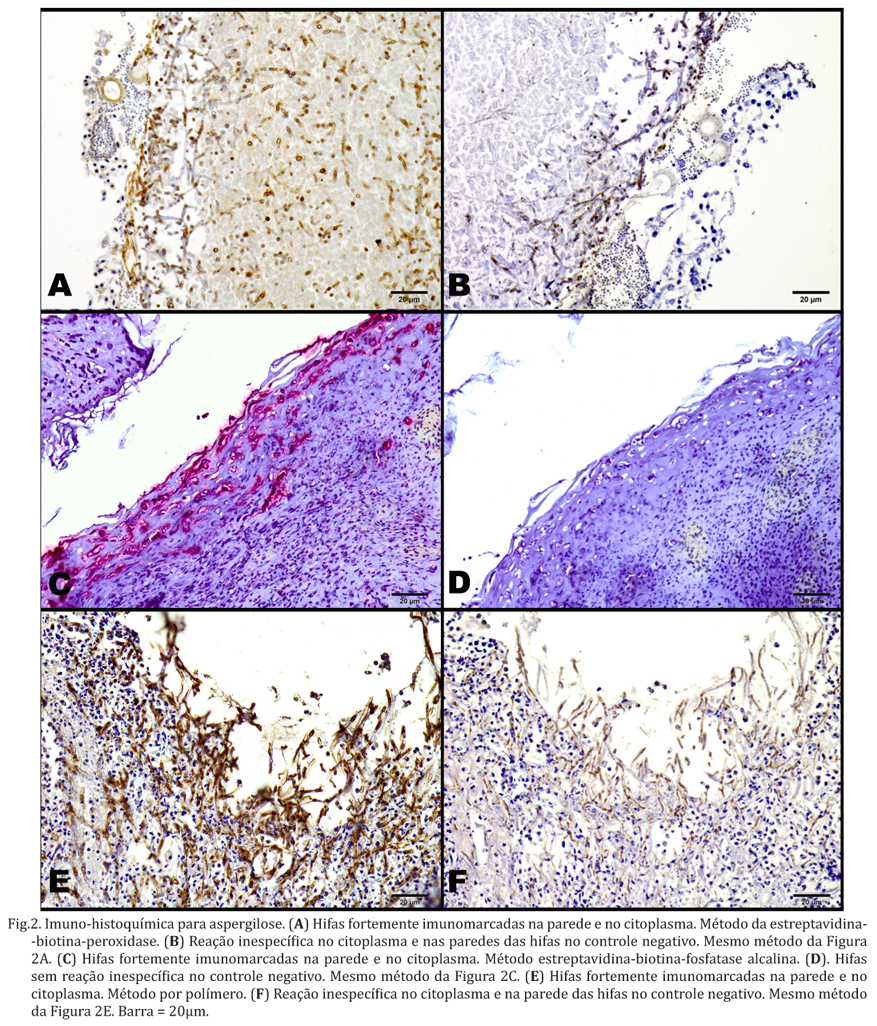Aiming to optimize the usage of the immunohistochemical technique (IHC) in the detection of Aspergillus spp. and zygomycetes (members of the Mucoraceae family), two fungal-specific monoclonal antibodies were used in tissue fragments (formalin-fixed paraffin-embedded), previously diagnosed by histomorphology as aspergillosis and zygomycosis. Tissues were submitted to three different detection systems (two biotinilated and one non biotinilated). Both antibodies showed high specificity and sensitivity in the examined tissues. No cross-reactions were observed between the antibodies used and the agents evaluated (including cases of aspergillosis, zygomycosis, candidiasis and pythiosis). However, nonspecific reactions in hyphae were observed in some cases, but were eliminated by mean of one of the detection systems used. In the aspergillosis cases, with the streptavidin-biotin-alkaline phosphatase method, nonspecific reactions were not observed. In the zygomycosis cases, nonspecific reactions did not occur using a polymer (nonbiotinilated). The IHC technique showed to be a useful tool detecting and confirming aspergillosis and zygomycosis in this retrospective study.
Aspergillosis; zygomycosis; immunohistochemistry; mycoses; cross-reactions; nonspecific reactions



